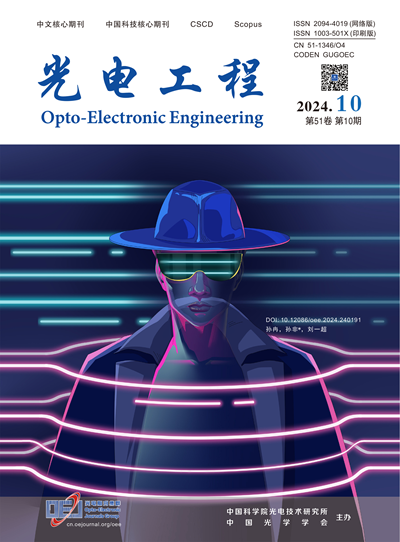The consistent of laser pointing and theodolite tracking
Q3 Engineering
引用次数: 1
Abstract
The distance between the laser optical axis and the tracking optical axis of the theodolite (axis shift) and the parallelism error of the optical axis cause the tracking position of the theodolite to be inconsistent with the laser pointing position.The analysis of the influence of off-axis and parallelism errors shows that a large amount of shift and parallelism errors will lead to inconsistencies between the laser pointing and the theodolite tracking pointing, which in turn leads to an increase in the blind zone of the laser ranging, a decrease in the operating distance and the accuracy of target positioning. A dynamic correction method for laser pointing based on bias tracking is proposed. By keeping the target always at the center of the laser beam and keeping the laser ranging position consistent with the theodolite tracking and locking position, it effectively solves the effect of laser edge energy drop on the operating distance. For a certain type of theodolite, the blind spot of the target can be reduced from 1 km to 82 m. At the same time, in view of the problem that the bias tracking algorithm needs the initial distance of the target to start the bias tracking, a one-dimensional search method for the target with unknown initial distance is proposed, which greatly improves the search efficiency of the target with unknown initial distance. The method in this paper solves the problem of the consistency between the tracking position of the theodolite and the pointing position of the laser, and greatly reduces the limitation on the shift and parallelism of the laser optical axis and the theodolite tracking optical axis激光指向与经纬仪跟踪的一致性
激光光轴与经纬仪跟踪光轴之间的距离(轴移)和光轴的平行度误差导致经纬仪跟踪位置与激光指向位置不一致。对离轴误差和平行度误差的影响分析表明,较大的偏移和平行度误差会导致激光测距与经纬仪跟踪指向不一致,进而导致激光测距盲区增大,降低工作距离和目标定位精度。提出了一种基于偏置跟踪的激光瞄准动态校正方法。通过使目标始终处于激光束的中心位置,使激光测距位置与经纬仪跟踪锁定位置保持一致,有效地解决了激光边缘能量下降对操作距离的影响。对于某型经纬仪,可将目标盲点从1 km降低到82 m。同时,针对偏置跟踪算法需要目标的初始距离才能启动偏置跟踪的问题,提出了一种初始距离未知目标的一维搜索方法,大大提高了初始距离未知目标的搜索效率。该方法解决了经纬仪跟踪位置与激光指向位置不一致的问题,大大降低了激光光轴与经纬仪跟踪光轴位移平行度的限制
本文章由计算机程序翻译,如有差异,请以英文原文为准。
求助全文
约1分钟内获得全文
求助全文
来源期刊

光电工程
Engineering-Electrical and Electronic Engineering
CiteScore
2.00
自引率
0.00%
发文量
6622
期刊介绍:
Founded in 1974, Opto-Electronic Engineering is an academic journal under the supervision of the Chinese Academy of Sciences and co-sponsored by the Institute of Optoelectronic Technology of the Chinese Academy of Sciences (IOTC) and the Optical Society of China (OSC). It is a core journal in Chinese and a core journal in Chinese science and technology, and it is included in domestic and international databases, such as Scopus, CA, CSCD, CNKI, and Wanfang.
Opto-Electronic Engineering is a peer-reviewed journal with subject areas including not only the basic disciplines of optics and electricity, but also engineering research and engineering applications. Optoelectronic Engineering mainly publishes scientific research progress, original results and reviews in the field of optoelectronics, and publishes related topics for hot issues and frontier subjects.
The main directions of the journal include:
- Optical design and optical engineering
- Photovoltaic technology and applications
- Lasers, optical fibres and communications
- Optical materials and photonic devices
- Optical Signal Processing
 求助内容:
求助内容: 应助结果提醒方式:
应助结果提醒方式:


